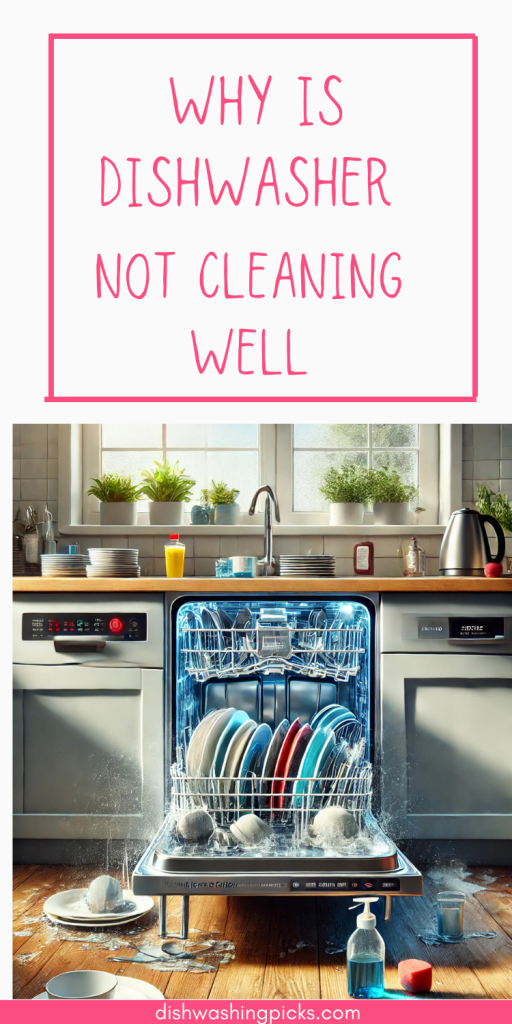Ever opened your dishwasher expecting sparkling clean dishes, only to find crusty plates and cloudy glasses? Frustrating, right? If your dishwasher isn’t doing its job, don’t panic—there are a few common reasons why this happens, and most of them are easy to fix. Let’s break it down.
1. Clogged Spray Arms
Think of your dishwasher’s spray arms like tiny water cannons. If food particles, grease, or mineral deposits clog the spray holes, water won’t reach your dishes properly. That means some come out spotless, while others look like they were barely touched.
Fix it:
- Remove the spray arms (they usually twist or snap off).
- Use a toothpick or small brush to clear out the holes.
- Rinse thoroughly and reinstall them.
2. A Dirty or Clogged Filter
Did you know most modern dishwashers have a filter that traps food debris? If it’s clogged, dirty water just recirculates, leaving your dishes looking worse than when they went in.
How to fix it:
- Find the filter (usually at the bottom of the dishwasher).
- Twist it out and rinse it under warm water.
- Scrub off any buildup with a soft brush.
- Clean it at least once a month to keep things running smoothly.
3. Hard Water Buildup
If your dishes come out with a chalky film, you might have hard water. Mineral deposits can build up inside the dishwasher, clogging spray arms and reducing cleaning power.
Solution:
- Run a cycle with white vinegar: place a cup of vinegar in a bowl on the top rack and run the dishwasher on its hottest setting.
- Use a dishwasher cleaner monthly to prevent buildup.
- Consider a water softener if hard water is a recurring issue.
4. Using the Wrong Detergent (or Too Much of It!)
Not all dishwashing detergents are created equal. Using a poor-quality detergent or too much of it can lead to residue buildup, streaky dishes, and a grimy interior.
Fix it:
- Switch to a high-quality detergent, preferably designed for your water type.
- Don’t overdo it—too much soap can leave behind film and reduce cleaning efficiency.
- Use rinse aid to help prevent water spots and improve drying.
5. Overloading the Dishwasher
We all love saving time, but cramming in too many dishes can actually make things worse. If plates and bowls are stacked too close together, water and detergent can’t reach everything.
Fix it:
- Don’t overload—leave space between dishes for water flow.
- Place larger items away from the spray arms to avoid blocking water.
- Angle dishes properly—face dirty surfaces toward the center for the best wash.
6. Worn-Out Door Seal
If the rubber gasket around your dishwasher door is cracked or worn, it can cause leaks and reduce water pressure inside the machine, leading to poor cleaning.
How to check:
- Inspect the seal for any cracks or mold.
- If it looks damaged, replace it—it’s usually an inexpensive and easy fix.
7. Heating Element Issues
Dishwashers rely on hot water to break down grease and sanitize your dishes. If your dishwasher isn’t heating properly, your dishes might come out greasy or still wet.
What to do:
- Run your kitchen sink’s hot water before starting the dishwasher. This ensures it gets hot water right from the start.
- If dishes are still cold at the end of a cycle, the heating element might be broken, and you may need a technician to replace it.
Final Thoughts
Most dishwasher problems come down to simple maintenance—cleaning the filter, checking spray arms, and using the right detergent can make a huge difference. If your dishwasher still isn’t cleaning properly after these fixes, it might be time for a deeper clean or professional repair.

